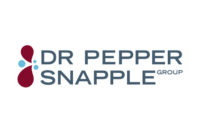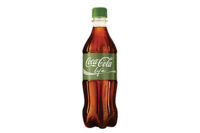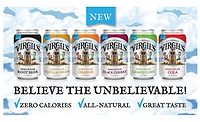Within the last five years, global launches of carbonated drinks have grown significantly, according to a December 2012 report by the Netherlands-based
|
Jump to: A man's world Middle of the road Looking beyond cola |
Innova Market Insights titled “Carving New Niches for Carbonates.” In fact, the United States remains the most active country in regard to carbonated product launch activity, it states. However, dollar sales for carbonated drinks decreased slightly by 0.8 percent to $28.7 billion, and unit sales decreased nearly 2 percent during the 52 weeks ending Jan. 27, compared with the prior-year period, in U.S. supermarkets, drug stores, mass market retailers, gas and convenience stores, military commissaries, and select club and dollar retail chains, according to SymphonyIRI Group, a Chicago-based market research firm.
As consumer preferences for healthier beverages continue to rise, the carbonated soft drink (CSD) category remains challenged, according to a January 2013 “Carbonated Soft Drinks” report by Mintel, a Chicago-based market research firm. Additionally, the category has received competition from other caffeinated segments like energy drinks and ready-to-drink (RTD) teas, it states.
Nevertheless, CSDs have enjoyed widespread penetration among consumers in the United States, according to a May 2012 report titled “Carbonates in the US” by Euromonitor International, Chicago. However, in addition to the challenges it faces on the health and wellness front, the category is struggling to retain its male consumer base, the report states.
A man’s world
Euromonitor reports that CSDs are losing popularity among male consumers under the age of 20. Such consumers prefer energy drinks that are high in caffeine and, therefore, they are more likely to choose energy drinks rather than CSDs for refreshment, it states.
One CSD brand that maintains popularity with young men, however, is Mountain Dew, a brand of PepsiCo, Purchase, N.Y., Euromonitor reports. In order to appeal more to men, the brand changed its name from “Mountain Dew” to “Mtn Dew” on its packaging and marketing materials. The brand also uses angles such as social media for its advertisements in order to reach that consumer group, it adds.
As PepsiCo’s second-largest CSD trademark, Mountain Dew grew volume in North America in 2012, proving that there still is potential for growth in CSDs outside of colas, said Indra Nooyi, chairman and chief executive officer of PepsiCo, during the company’s fourth-quarter 2012 earnings conference call.
To expand the drinking occasion of CSDs, beverage-makers have launched new products positioned for different times of the day. For instance, earlier this year, PepsiCo launched Kickstart by Mountain Dew, which contains 92 mg of caffeine, 80 calories and 5 percent juice in each 16-ounce can. The beverage is positioned for the morning drinking occasion. Before the beverage officially launched in stores, Mountain Dew gave consumers an early chance to taste the beverage and used the Web and social media to encourage chatter about the brand.
At the other end of the spectrum, The Coca-Cola Co., Atlanta, released caffeine-free Coke Zero for end-of-the-day consumption in the Netherlands. To get consumers through the work day, PepsiCo launched Pepsi EX Extra in Japan. The CSD comes packaged in a 200-ml can and contains 38 mg of caffeine, Innova’s report states.
To attract male consumers, PepsiCo, The Coca-Cola Co. and Plano, Texas-based Dr Pepper Snapple Group (DPS) have launched zero- and mid-calorie colas in the United States that are specifically formulated and marketed for men. Zero-calorie offerings such as The Coca-Cola Co.’s Coke Zero and PepsiCo’s Pepsi Max are formulated to have a full-calorie taste profile without the calories. Yet, both brands purposely emit the word “diet” so as not to deter men, according to Euromonitor. DPS marketed a mid-calorie offering to men with Dr Pepper Ten.
“Coke Zero has a taste which is closer to that of the original Coke, while many consumers feel Diet Coke has a less intense taste,” Euromonitor’s report states.
"The appeal of Coke Zero to consumers is that it gets the zero-calorie message across without actually mentioning that it is a diet drink, thus allowing Coke Zero to tap into a consumer base without cannibalizing its Diet Coke drinkers.” |
“A primary reason for the rapid growth of the brand is that the marketing is directed toward men rather than women. Men have generally stayed away from diet drinks as the term ‘diet’ is perceived as feminine. The appeal of Coke Zero to consumers is that it gets the zero-calorie message across without actually mentioning that it is a diet drink, thus allowing Coke Zero to tap into a consumer base without cannibalizing its Diet Coke drinkers.”
Coke Zero volume grew in the mid single digits in the fourth quarter of 2012 and in the high single digits for the full year, The Coca-Cola Co. reports.
In 2008, PepsiCo rebranded its Diet Pepsi Max brand as Pepsi Max in hopes of acquiring consumers — specifically men — who wanted zero calories without the “diet” label, the Euromonitor report notes. Like Coke Zero, Pepsi Max has zero calories and features a taste profile closer to its full-calorie counterpart.
To reach its female consumers, PepsiCo uses brand ambassadors, marketing and packaging via its Diet Pepsi brand. Last summer, for example, the brand launched the Sip in Style Sweepstakes, enabling Diet Pepsi fans to enter for a chance to win prizes such as lipstick, a wardrobe makeover by actress Sofia Vergara’s personal stylist, and a $1,000 shopping spree in New York City.
Middle of the road
Last year, PepsiCo launched mid-calorie Pepsi Next nationally. Like Pepsi Max, the soft drink features
a taste profile closer to regular Pepsi but contains 60 percent less sugar than the full-calorie offering by using a proprietary sweetener blend, the company says. In its first year, the product achieved nearly $150 million in estimated retail sales, said Hugh Johnston, executive vice president and chief financial officer for PepsiCo, at the Consumer Analyst Group of New York (CAGNY) conference.
Similarly, The Coca-Cola Co. began testing its own mid-calorie sodas in the United States last year. Sprite Select and Fanta Select contain 50 percent of the calorie content as their full-calorie counterparts, according to Innova’s report.
Following the 2011 launch of Dr Pepper Ten, DPS expanded the 10-calorie platform in select markets to 7UP Ten, Sunkist Ten, A&W Ten, Canada Dry Ten and RC Ten, and this year the entire line will be available nationwide, DPS reports.
“It is no surprise consumers are becoming more health conscious every day, but when purchasing beverages, taste still reigns,” said Larry Young, president and chief executive officer for DPS, during the company’s fourth-quarter 2012 earnings conference call. “That is why we created the Ten platform. It gives consumers the same great taste and mouthfeel of a regular soft drink but with only 10 calories per 12-ounce serving.
“With a full year of support behind Dr Pepper Ten, the Dr Pepper trademark grew dollar share by 0.2 in Nielsen channels,” he continued. “Dr Pepper Ten now holds a 0.3 share of the CSD category and, more importantly, has brought new and lapsed consumers back to the category. Through its first year of launch, over 55 percent of Dr Pepper Ten’s volume was incremental to the CSD category, and it grew Dr Pepper trademark household penetration by 3 million households.”
Brand investments associated with the Ten platform launch are expected to be in excess of $30 million in 2013 and are above the expected contribution of these brands in the year, said Martin Ellen, chief financial officer for DPS, during the call.
In addition to its low-calorie positioning, Dr Pepper Ten launched with a marketing campaign focused exclusively on men with its gun-metal gray color scheme and controversial tagline of “It’s not for women,” noted Jonas Feliciano, beverage analyst for Euromonitor International, in the company’s January 2013 soft drinks blog post.
“This concept of ‘drink as identity’ has carried over into Dr Pepper’s most recent ad campaign, which focuses on consumers’ identity,” he wrote. “The 2013 launch of ‘/1’ or ‘one of one’ centers on the concept that ‘each one is unique’ and spotlights both celebrity and everyday people for their individuality.
“Many new product launches take a similar stance to this ‘individual consumer’ approach,” he added. “Whether it is gender-specific, as in the case of
Dr Pepper Ten and HER energy drinks, or lifestyle-focused with Greater Than’s coconut water sports drink that targets athletes seeking natural hydration, niche positioning will continue to be an important marketing tool for the future. The ability to sell a story along with a beverage to an individual, as opposed to a group, will be the key to connecting with consumers seeking a match.”
Looking at the CSD category as a whole, mid-calorie sodas appear to be here to stay.
“The mid-calorie soda concept is another example of how market categories continue to differentiate to provide consumers with more choices,” says Natalie Tremellen, market analyst for Innova Market Insights. “I do think it has staying power as it appeals to a wide spectrum of consumers — for example, males who are put off by zero/diet drinks [and] the health-conscious [consumer] who makes a compromise and would prefer to consume [fewer] artificial sweeteners [that are] found in zero-[calorie] products but less sugar than found in original, full-calorie carbonates. Then there are the consumers who don’t like carbonates because they are too sweet and may be brought back to the category to at least try mid-calorie sodas. Also, there may be potential for mid-calorie sodas to appeal to younger males and females attending bars and clubs to be used as mixers with alcohol to lighten the calorie load.”
As consumers continue to turn away from sugar and toward natural alternatives, mid-calorie sodas and stevia-sweetened soft drinks should take off, Innova’s report states. Worldwide, stevia applications increased 41.6 percent in the first half of 2012 compared with the first half of 2011, it adds.
“The use of the natural sweetener stevia adds a more natural feel to what is generally considered to be an unhealthy product and may reach out to older consumers,” Innova’s Tremellen says. “I think a lot of future new product development will be geared toward using more natural sweeteners as long as an acceptable taste is achievable.”
Bethesda, Md.-based Honest Tea, a wholly owned subsidiary of The Coca-Cola Co., released earlier this year Honest Fizz, a naturally sweetened, zero-calorie CSD in select natural food and specialty grocers. As a result of interest from retailers, Honest Fizz expanded availability at a number of natural and specialty retailers around the country including Whole Foods Market, Sprouts Farmers Market, Natural Grocers by Vitamin Cottage, Gelson’s Markets and Bristol Farms. Honest Fizz is naturally sweetened with a blend of stevia leaf extract and erythritol, the company says.
PepsiCo also plans to use natural sweeteners such as stevia to produce reduced-calorie offerings that don’t compromise on taste in the near future, Nooyi said during the company’s fourth-quarter 2012 earnings conference call.
“Our research indicates that consumers still love bubbles; they love the cola taste but would like to lower their caloric intake without the taste of artificial sweeteners,” Nooyi explained during the call. “So as we shared … over a year ago, we have been developing new natural sweeteners and flavorings aimed at reducing calories with no compromise on taste. We have some promising projects that are currently going through the [Food and Drug Administration] (FDA) review process that once commercialized could potentially alter the trajectory of our cola business in a meaningful way.”
Looking beyond cola
According to Euromonitor’s May 2012 report, growth in non-cola-flavored CSDs such as lemonade, lime and orange balanced out a decline in overall cola CSDs. This shift in consumption represents a shift in consumer preference for flavored carbonates. Cola CSDs often are perceived by consumers as being unhealthier than other carbonates, even though they might have the same types of ingredients and number of calories, the report notes.
Nevertheless, cola remains the most popular flavor in the CSD category, according to Innova’s report. Citrus flavors follow as the second most-popular flavor option for CSDs, it adds.
Demonstrating cola’s popularity, The Coca-Cola Co. reported that its global share in the sparkling beverage market was up 3 percent last year, led by its flagship brand, Coca-Cola.
“This is the third straight year our sparkling beverages have grown by at least 550 million incremental cases,” said Muhtar Kent, chairman and chief executive officer of The Coca-Cola Co., during the company’s fourth-quarter 2012 earnings conference call. “This has added more than 13 billion new servings annually to our global business for the past three years. This growth of our sparkling beverages has consistently and reliably been led by brand Coca-Cola, which grew a very healthy 3 percent for the full year of 2012.”
Furthermore, the company’s Fanta brand grew 5 percent in volume, and its Sprite brand grew 4 percent in volume last year. In North America, however, sparkling beverage volume declined 2 percent in the fourth quarter of 2012 and 1 percent in the full year. Yet, volume for its Fanta brand was up 10 percent during the fourth quarter in the region, the company reported.
Although volume for DPS’s Dr Pepper brand decreased 1 percent in the fourth quarter because of the national rollout of Dr Pepper Ten during the previous year’s time frame, its Canada Dry brand increased in the high single digits, the company reported. Its Sunkist and A&W brands also increased in the low single digits during the fourth quarter, while the Sun Drop brand declined in the mid single digits and 7UP was flat. The rest of its CSD brands increased 1 percent in the quarter, it noted. For the year, CSD volume was flat, as a mid single-digit increase in Canada Dry volume was offset by a double-digit decline in Sun Drop and low single-digit declines in 7UP and Sunkist. The rest of DPS’s CSD brands were flat for the year, it says.
For PepsiCo, CSD volume declined approximately 1 percent during the fourth quarter in the Americas, the company reported. Globally, beverage organic growth increased 2 percent in the fourth quarter and 1 percent for the full year, it added.
Although traditional cola- and citrus-flavored CSDs remain popular, strawberry and red apple are the next preferred flavors, according to Innova’s report. Last summer, PepsiCo expanded its Sierra Mist brand with a new flavor: Strawberry Kiwi Splash. Additionally, Culver City, Calif.-based Zevia added Strawberry, Cherry Cola and Lime Cola flavors to its line of stevia-sweetened CSDs last spring.
Furthermore, niche beverages featuring herbs and spices are gaining momentum, Innova’s report states.
“I think more soft drinks using botanicals/herbs/spices will continue to emerge and bridge the gap between the many health aspects that juice drinks offer,” Tremellen says.
For instance, last summer Minneapolis-based Boundary Waters Brands LLC added two flavors to its line of Joia all-natural sodas, which are sweetened with cane sugar, stevia and monk fruit, also reflecting the trend toward natural sweeteners. The new flavors are Ginger, Apricot & Allspice, and Orange, Jasmine & Nutmeg. In the fall, BevMarketing Group Inc., West Hollywood, Calif., launched Minta and Diet Minta sodas featuring natural mint and lime flavors.
CSDs also might begin to focus more on regional trends instead of global trends, Euromonitor’s Feliciano pointed out in his January 2013 soft drinks blog post. Developing nations are experiencing a proliferation of local brands and familiar flavors that global manufacturers cannot ignore, he said.
“Whether it is kvass-based drinks in Eastern Europe, guarana carbonates in Latin America, or lemon-lime drinks in India, large companies are realizing the potential of beverages similar to the unpackaged varieties that epitomize local culture,” he wrote. “The result is a diverse portfolio of soft drinks.”
And these trends might be affecting U.S. launches as well. For instance, late last year Pure Ally, Ft. Lauderdale, Fla., launched Kwass’Up, a non-alcohol malt beverage modeled after kvass. And last fall, Bebidas USA Inc., Easton, Pa., brought Planet Pulp carbonated fruit drinks to the United States. The line includes several citrus flavors as well as Guarana and Diet Guarana varieties.
From 2011 to 2016, Mintel projects the overall CSD market to grow 6 percent, reaching $45.5 billion in 2016 in current prices. However, after adjusting for inflation, market sales are projected to decline 3 percent during that time frame.
“I think soft drink product launch activity should experience growth in order to continue to cater to a more diverse range of consumer groups,” Innova’s Tremellen says. “Healthy innovation in regard to mid-calorie drinks and natural sweeteners will bring more consumers to the category, [which] means that there will be something for everyone.”








